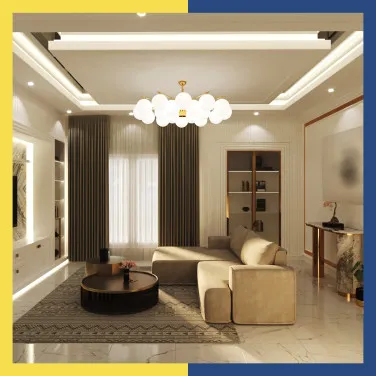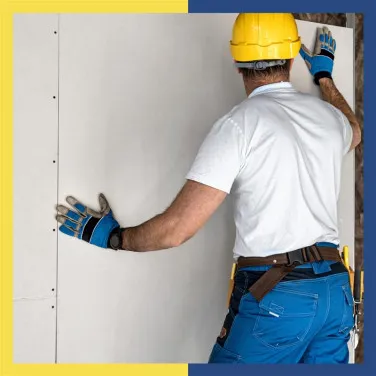Struggling with water leaking from walls? This is your guide to damproofing
Discover the importance of damproofing in preventing damp walls and moisture intrusion. Learn effective damp wall solutions to stop water leaking from walls and protect your home from water seepage for long-term durability.
Have you ever found a damp spot on your wall and ignored it, thinking it was harmless? That small stain could be a warning sign of deeper issues. Water seepage in walls is one of the most overlooked threats to a building’s integrity. Without proper damproofing and waterproofing, moisture can weaken the very foundation of your home, leading to costly repairs and safety hazards.
Understanding structural integrity
A strong home starts with a strong foundation, but what happens when water finds its way in?
- Structural integrity is the ability of a building to withstand external forces and remain stable over time
- Water exposure is one of the biggest threats to a structure, causing corrosion in steel reinforcements and weakening the overall framework
- Ignoring moisture in walls can lead to cracks, pest infestations, and even electrical hazards that can affect the structure
What is damproofing?
Damproofing is the process of preventing water from logging or pocketing in a building’s structure and causing damage. It controls moisture and allows water to escape rather than completely sealing out water. A well-executed damp wall solution ensures that if water enters, it has a path to flow out instead of getting trapped inside walls.
Why damproofing is essential in India
India’s climate is unpredictable, but your home’s protection should not be. This is why damproofing is so essential in India –
- Indian climatic conditions, especially monsoons, create excessive water seepage in walls, making homes vulnerable to damage
- Poor drainage, waterlogging, and high humidity levels accelerate damp formation
- Many Indian homes suffer from damp walls due to substandard construction materials and improper site selection
- Basements and ground floors are highly prone to moisture in walls, requiring careful damproofing strategies
Common causes of damp walls
If you don’t tackle the cause, the problem of moisture in walls will keep coming back. Here are some common causes of it –
- Groundwater seepage – This is when water rises from the ground into walls due to capillary action.
- Pipeline leaks – Poor-quality pipes and adhesives lead to water leaking from walls.
- Water accumulation – Stagnant water near foundations or on roofs creates damp conditions.
- Poor ventilation – Lack of airflow increases humidity and encourages damp formation.
- Substandard waterproofing – The use of incompatible or low-quality materials worsens moisture in walls.
Effective damproofing materials and methods
Prevention is always better than cure when it comes to home protection. Some of the most effective damproofing solutions include –
- Membranes – These are applied on surfaces to prevent moisture penetration.
- Coatings – These include specialised paints and sealants that protect walls from dampness.
- Drainage solutions – These solutions include properly designed slopes and drains to direct water away from the structure.
- High-quality pipes and adhesives – These prevent the internal leaking of water from walls.
- Soil testing and elevation checks – These tests ensure that construction sites are chosen with proper drainage in mind.
Integration of waterproofing and damproofing
Combining the techniques of waterproofing and damproofing provides comprehensive protection and ensures your home stays dry and damage-free. Apart from that, proper slope design around the house should be ensured so that water does not accumulate and instead flows out. Moreover, elevating buildings above the ground level prevents direct contact with waterlogged areas.
Apart from all of these measures, placing drains strategically is another key method to prevent water seepage in walls. This is because ensuring proper water drainage is crucial before applying waterproofing. If a membrane is placed over a damp wall without addressing the underlying issue—such as repairing the wall or redirecting the water—the trapped moisture will have no escape route. This leads to water pocketing, which can worsen structural damage over time.
Practical tips for homeowners and builders
A little precaution today can save you from expensive repairs tomorrow –
- Identify early signs – Damp walls, bulging paint, and mould growth are early indicators of moisture issues.
- Inspect construction materials – Use terrain-specific materials suited for the location for the best results.
- Ensure proper drainage – Water should never settle around or inside a structure to prevent any moisture-related damage.
- Conduct soil and slope testing – These tests ensure that there will be no water accumulation, thereby improving foundation stability.
- Regular maintenance – Checking for cracks, leaks, and clogged drains reduces the risk of damp formation.
Fix the dampness to protect the house
Ignoring damp walls can lead to severe structural damage and financial loss. Implementing proper damproofing measures ensures your home remains strong and durable. Dr. Fixit provides advanced damp wall solutions, including coatings, sealants, and membranes, to prevent moisture in walls and ensure long-lasting protection against water seepage in walls. Along with that, it also provides certified contractors and answers to all your waterproofing-related queries. Fill out the form given below to get in touch with the experts at Dr. Fixit today!
Frequently asked questions (FAQs)
FAQ#1 – Do internal walls need damproofing?
Yes, internal walls need damproofing, especially in humid areas like bathrooms and kitchens. Internal walls are prone to moisture in walls, which can weaken their structure over time if not treated.
FAQ#2 – Can damproofing be applied on wet walls?
No, damproofing solutions cannot be applied on wet walls. The root cause of the dampness must be addressed before applying any solution. If water leaking from walls is not fixed first, damproofing will only mask the issue temporarily.
FAQ#3 – What is integral damproofing?
Integral damproofing involves mixing damproofing materials directly into concrete during construction, creating a water-resistant barrier that prevents moisture in walls.
FAQ#4 – Which is better – damproofing or waterproofing?
Both damproofing and waterproofing work best when integrated with each other to prevent water seepage in walls. Damproofing controls moisture movement while waterproofing blocks external water completel
Get Professional Waterproofing Solutions Today
Fill The Form below to took free site evaluation by Dr. fixit point safe painting service expert
Get Professional Waterproofing Solutions Today
Fill The Form below to took free site evaluation by Dr. fixit point safe painting service expert





